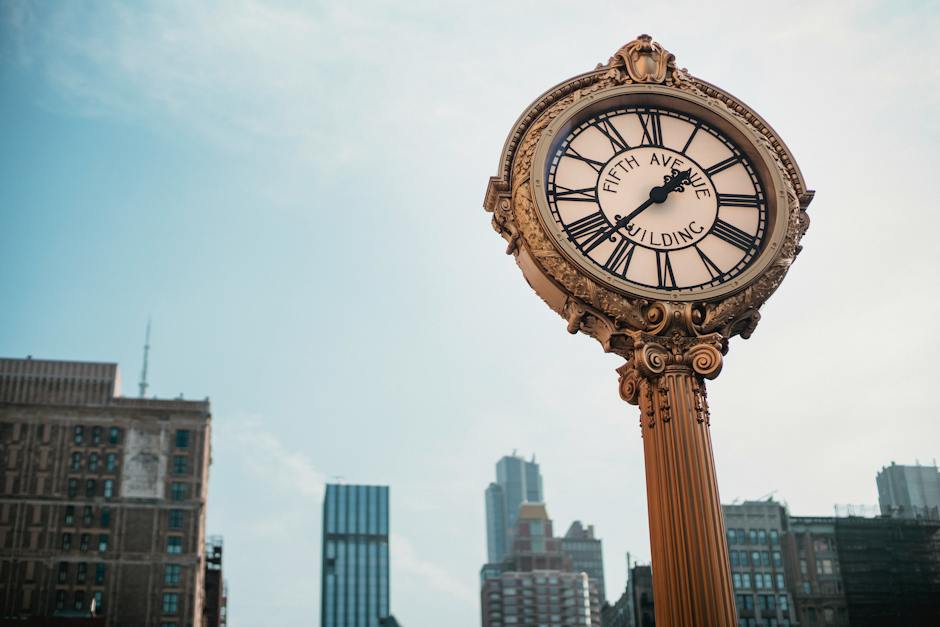The dance of the paintbrush, the whisper of the pencil against paper, the steady hum of the sculptor’s chisel – artists of all types engage in a delicate ballet of creation and expression. Yet, even the most ethereal of artistic endeavors can be grounded and amplified through the practical application of time management principles. As we embark on this exploration, understand that the key to harnessing your artistic potential lies not just in your talent, but in your ability to organize and prioritize your time. Setting achievable goals, mastering prioritization techniques, and time blocking for creativity aren’t just buzzwords, they are vital tools for carving out the space necessary to evolve your art. Embrace these concepts, and watch as your artistic journey unfolds with greater precision and satisfaction.
Setting Achievable Goals
Harnessing Time Through Achievable Goals: A Guide for Artists in Pursuit of Creative Vision
The canvas of time stretches before the artist, vast and undiscriminating. Amidst the vivid orbits of creativity, artists must navigate the passage of hours and days with the same surefooted precision they apply to their brushes upon a canvas. Why, one might ponder, is the careful setting of achievable goals paramount in this journey? The answer lies in the realm of structure amidst the fluidity of artistic endeavor.
In the grand tapestry of creation, time management serves as the warp thread, providing the backbone on which the weft thread of creativity can interlace. Achievable goals are the individual knots that strengthen this backbone, allowing artists to weave their visions into reality with unwavering focus and minimal distraction.
Firstly, achievable goals act as beacons of clarity. When artists outline clear, specific objectives, they illuminate their path, ensuring each brushstroke moves them closer to their anticipated masterpiece. As with sketching the outlines before delving into the luxuriant world of color, defining what is achievable simplifies decision-making, prioritizes actions, and clears the mental clutter that can often hamper creativity.
Moreover, the artists’ studio, whether a sun-drenched space or a corner brimming with inspiration, mirrors the inner workings of the mind. By setting tangible milestones, creators instill their physical and mental workspace with purpose and direction. Like arranging a palette in preparation for painting, organizing time nurtures efficiency and fluidity in the artist’s process.
Achievable goals also foster motivation, providing incremental signposts of success along the artist’s journey. Acknowledging progression fuels the fires of inspiration, pushing the boundaries of what the artist can manifest. Just as layers upon layers build depth in artwork, stacking small achievements paint a rich tapestry of advancement and growth in the artist’s journey.
Pacing is yet another facet of artistry that mirrors life. The brush does not always need to stroke with fervor; sometimes a gentle, deliberate dab is necessary. Achievable goals allow artists to develop a rhythm that harmonizes with their natural pace, ensuring that energy is reserved and that burnout is kept at bay—much as one carefully conserves the luminosity of highlights in a painting.
It is also only through the telescope of time that artists measure their progress. Reflecting upon the completion of goals, they gain valuable insights into their creative process—what accelerates it, what decelerates it, and what garners the most rewarding results. Assessments such as these are akin to gazing at one’s art from a distance, perceiving it with fresh eyes and an open heart.
By setting achievable goals, artists craft not only their works but also the time they inhabit—an intangible medium, unquestionably difficult to mold yet essential to master. Goals provide the milestones for their creations, allowing them to forge ahead and expand their horizons with every tick of the clock.
Navigating time, much like the serpentine river that meanders yet finds the sea, demands from artists conscious effort and strategy. Achievable goals serve as the vessel, the temporal compass, guiding through the currents and eddies of artistic pursuit. They are the silent sentinels that guard against the void of unspent hours and the disarray of unbridled creativity, ultimately ushering artists towards the resounding triumph of actualized vision. One rhythmic tick at a time, they translate the ephemeral into the eternal, the imagined into the visible.

Prioritization Techniques
Embracing Structure in the Artist’s Odyssey: Effective Task Prioritization for Creative Minds
In the dance of creation, artists are often entangled in the push and pull between structure and freedom, with productivity being a key partner that many find elusive. Prioritizing tasks is not merely a necessity but an art in itself, one that enhances the harmony within a creative practice. Here, we delve into methods of prioritizing tasks to elevate an artist’s productivity amidst the whirlwind of imagination.
Begin with the masterlist – a canvas of possibilities. Consider all ongoing projects, upcoming opportunities, and maintenance tasks necessary for the well-being of one’s artistic practice. This comprehensive inventory acts as the foundation upon which a well-structured workflow is built.
Classification is the next stroke of genius. Categorize tasks under headers such as project development, promotion, skill enhancement, and administrative duties. Recognizing the nature of tasks is akin to selecting the right brush for a stroke; it ensures that each action brings one closer to the masterpiece that is a balanced artist’s life.
Prioritize with the lens of urgency and value. Identifying what needs immediate attention versus what can contribute most significantly to long-term aspirations is essential. One method is the Eisenhower Matrix, which delineates tasks as urgent, not urgent, important, or not important. Urgent and important tasks take precedence, but remember, importance often outweighs urgency in an artist’s world where strategic, value-rich initiatives shape a sustainable career path.
Time-blocking is a powerful palette for painters of productivity. Allocate specific chunks of time to different categories of tasks and abide by them with the discipline of a devoted sculptor to their clay. This method ensures that each aspect of an artist’s work receives the attention it deserves while safeguarding against the all-too-common pitfall of over-immersion in a single project.
Deadlines are not the enemy; they are the rhythmic beats to an artist’s symphony of tasks. Assign deadlines, even to projects that may not inherently have them. This creates a sense of tempo within the workflow, allowing the artist to dance through tasks with focused intensity and graceful transitions.
Finally, leverage technology and tools. Digital calendars and project management apps are the new-age palette knives that every artist should utilize. Orchestrate tasks and deadlines within these platforms to gain visual clarity and receive reminders, ensuring that no stroke of brilliance is left behind in the haste of creativity.
The equilibrium lies in the confluence of creativity and method. A prioritization strategy that is carefully curated to the artist’s individual rhythm can yield a bounty of productive sessions, leading to more profound art and an enriched life beneath the studio lights. Embrace these strategies, and the easel of daily tasks will no longer be a source of consternation but one of empowerment and structured freedom. Life, in all its facets, is a canvas, and productivity, an art – practice it with intention.

Time Blocking for Creativity
Now, delve into the heart of time blocking—an organizational strategy which can be a salvation for those engrossed in the artistic creation. Picture time as a canvas, each block a brushstroke that contributes to the masterpiece of your day.
Time blocking, at its core, is a calendar-based system for budgeting how hours are spent. It involves segmenting your day into blocks—each allocated for a specific task or group of tasks. Here’s a brushstroke-by-brushstroke breakdown of how to implement this technique and why it could be a catalyst for amplified artistic output.
First, canvas your week. Lay out a typical week on a calendar template. Digital calendars work splendidly, allowing for flexible adjustments and reminders. Each day, just like a series of canvases, starts blank and brimming with potential.
Next, apply the underpainting. These are the fixed elements of your schedule: meals, sleep, and other non-negotiables. Like in a painting, they set the stage.
Now, it’s time for the composition. Examine the projects or artworks with imminent exhibits or deadlines. These demand prime time blocks, perhaps during peak personal energy levels, ensuring they receive the dedicated attention they beckon.
Subsequently, mix in the layering. Identify the tasks that are important but lack immediate deadlines. They might be larger works-in-progress or endeavors to experiment with new mediums. Schedule them into generous blocks, allowing for exploration without the urgency that accompanies the deadline-driven projects.
Then, include the detail work. Smaller, routine tasks, like responding to emails or ordering supplies, should be batched together. Clustered in a single block, these necessaries become less of a distraction, allowing for longer stretches dedicated to deep creative work.
Don’t forget to leave negative space. This is vital. Blocks of unscheduled time are the breathing room between planned sessions. They provide buffer, prevent burnout, and often become the periods where spontaneous inspiration flourishes.
As your week takes form, maintain fluidity. A rigid structure may inhibit the creative spirit. Allow blocks to be moved if a stroke of inspiration hits or a project needs more time. Dynamic adjusting keeps the composition balanced and the artist at ease with the pace of their creativity.
Lastly, remember to step back and evaluate the whole. Adjust your future blocks based on what’s worked and what hasn’t. Was a certain time of day more productive for a specific type of task? Did a certain project require more time than anticipated? Like refining a painting, adjust your approach to the next week’s canvas accordingly.
Through time blocking, the artist gains control over the chaos of creativity. With enhanced focus, heightened productivity, and structured freedom, the flow state becomes more attainable. The masterpiece of a harmonious artistic life is not just possible—it’s within reach, one block at a time.

Embarking on the path of time management for artists allows one to transform mere talent into a symphony of productivity and artistic fulfillment. As you step back and survey the landscape of your efforts, remember that the true masterpiece is not only the art you create but also the beautifully orchestrated process behind it. Your journey through setting goals, prioritizing tasks, and meticulously sculpting time for creativity has equipped you with the ability to navigate the complexities of the artistic world with grace and efficiency. Let these tools become the unseen but ever-present mediums that support the canvas of your artistic career, ensuring that each stroke of genius is given the time it truly deserves.


























